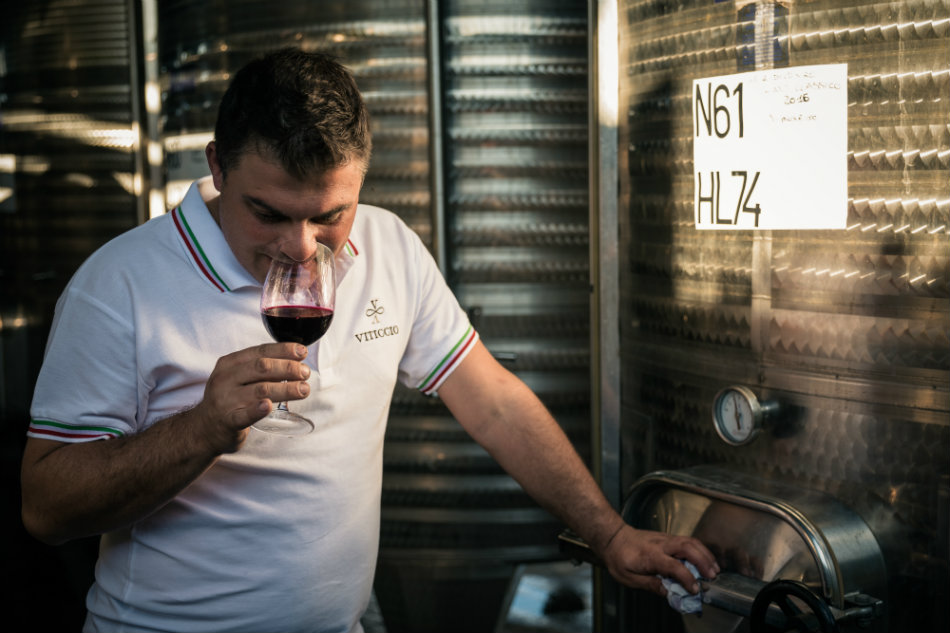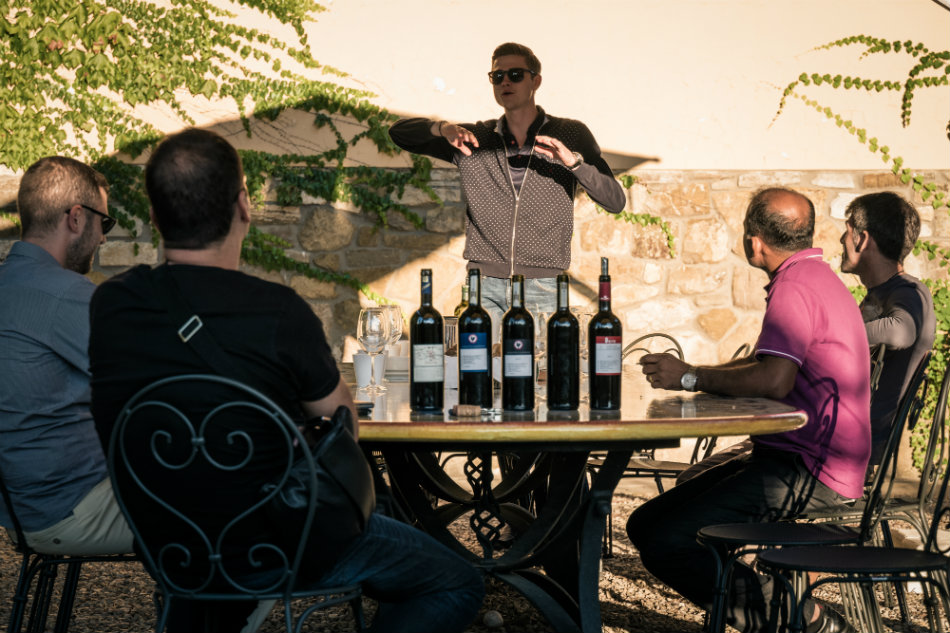At Viticcio, your wine tasting is about to get personal.
Winemakers and enologists have an endless variety of jobs during any given workday throughout the year, from tending the vineyards to the many technical considerations of winemaking in the cellar (maceration, fermentation, aging in wood or stainless steel, and so on). Blending the wines is no less important a task. Selecting which varietal wines to add in what percentages (and according to the DOC or DOCG regulations) is an art form in itself.
But, you don’t have to be Leonardo Da Vinci to enjoy putting a brush to canvas. Likewise, you don’t have to be an expert enologist to enjoy the unique experience of making your own wine blend! At Viticcio, we offer a tour especially designed for the creative wine lover who wants to gain a deeper understanding of wines: our Wine Blending Tours.
Why winemakers blend
The power, fun, and magic in wine blending comes from the fact that you’re adding complexity to the final wine. You choose characteristics to give you a product that reflects the winery’s image or—in this case—your own taste preferences.
The varietal wines are kept separate during all processes of winemaking, from the harvest to maceration, from fermentation to aging, until the moment of the blend. This way, the winemaker can assess what each varietal will bring to the blend: the amount of tannins, alcohol, acidity; what will make a wine smoother, fruitier, with a stronger “backbone,” or a deeper color; to say nothing of the potential aroma and taste combinations you can create in blending! Even the smallest changes can create entirely new results. Many wines, such as our Viticcio Chianti Classico DOCG Riserva 2013, are based largely on one varietal with just 5-10% of an added wine (in this case, 90% sangiovese, 5% merlot, and 5% syrah).
It’s important to remember that blending is not used to fix a wine that starts out as poor quality. The wine’s quality begins in the vineyard, and faults are not covered up by blending. Hence, the quality of our vineyards is closely monitored. We do everything by hand, have multiple selections during harvest, and practice organic and biodynamic agriculture for the best and purest expressions of our grapes, from the vineyards to the cellar. The wines you’ll use during the Blending Tour are our actual wines that we bottle for our labels (you didn’t think we gave you lesser-quality stuff, did you?).
Blend your own wine at Viticcio
The Wine Blending Tour is unique—you won’t find this option in most wineries. Our tour includes a presentation of the winery upon your arrival and a visit to the winery before finishing in the cellars where you’ll learn about the different characteristics that each varietal wine can bring to the blend. And then…start blending!
Our enologist Daniele Innocenti will help guide you if you have questions or doubts. But, as he says, “Tastes are subjective.” What is delicious for you can be less than tasty for your blending buddy. We don’t tell you what to blend, simply how to get closer to the wine of your personal tastes.
The beauty of wine and of the blend that you make during this tour is that it reflects you.
The varieties of grapes to blend
When you do the Wine Blending Tour at Viticcio, first you’ll taste the base varietal wines to know what characteristics each one has. Some visitors ask to taste our labels, too, so that they can better orient themselves when it comes time to blend while holding an example in mind.
In general, Tuscany’s noble sangiovese is the best and most traditional base for beginning your blend. Many classic Tuscan wines are based on sangiovese, such as our Viticcio Chianti Classico DOCG 2014 (98% sangiovese), or to a lesser degree like our Bere Toscana Rosso IGT 2014 (50% sangiovese). Sangiovese is high in acidity and in tannins, and it generally provides fruity notes like cherry, red plum, strawberry, and fig on the nose, and leather, tomato, thyme, dried roses, and an earthiness on the palate.
Cabernet sauvignon and merlot are two varieties that go well together. Cabernet sauvignon is medium-high in tannins and acidity, lending notes of dark fruit like black cherry, black currant, and blackberries as well as pepper, licorice, and some tobacco. Merlot, with less tannins and acidity, is known for being a soft and easy-drinking wine, smooth, plummy, sometimes with notes of chocolate, vanilla, and clove. We’ve also recently added syrah as a blending option, which can give your wine sweeter tannins, a rich texture, and notes of spices like allspice, clove, anise, and black pepper.
But, our enologist is only there to guide you. You make the wines, and there is no penalty for creativity.
To book a Wine Blending Tour, head on over to Tours and Tastings and reserve using the contact form provided. See you soon!






